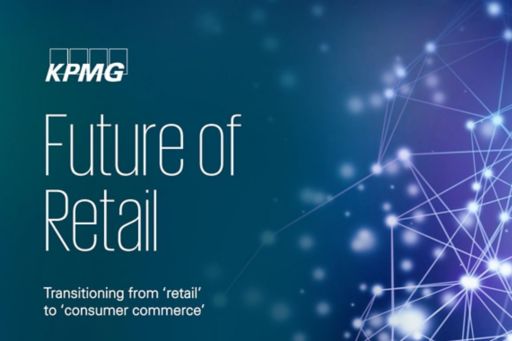Retailers want to turn the page on the disruption of 2020. Yet they are unsure exactly what the future will bring.
Much has changed over the past year. But the reality is that many of the changes wrought by the COVID-19 pandemic – to buying behaviors, to workforce models, to channel mixes and to business models – were underway long before the pandemic. COVID-19 only accelerated these trends (in some cases by 5-10 years), driving an unprecedented level of urgency to retailers’ actions.
As these trends evolve, the links between physical locations and the ability to sell products and services are fraying quickly. And, as they unravel, the shift from ‘retailing’ to ‘consumer commerce’ is picking up speed. Indeed, the entire definition of what it means to be a retailer is changing.
In this point of view, we explain why the market is changing. We describe what the winning business models of the future will look like. And we explore how you can achieve this transformation, outlining the key capabilities and strategies you will need to move your organization into the future.
Check out the highlights of our report below. Download the PDF. And contact your local KPMG firm or any of the contributors listed below to learn more.
1. Disruption accelerated
The recent crisis has drawn a stark line under any indecision. The choices retailers make in the next months will influence their success over the next 5 years or more.
2. Business models and partnerships
As store-based retailing moves beyond its zenith, the growth of platform ecosystems alongside omni-channel are driving the next wave of competition and business model evolution.

3. Customer
Customer expectations and needs are rapidly changing as retail moves from being a ‘push’ (i.e.B2C) to a ‘pull’ (C2B) model.

4. Reducing cost of doing business
With retail margins under increasing pressure and costs increasing across multiple aspects of the value chain, most recognize that conventional forms of cost cutting are no longer enough to shore up margins and ensure the business is fit for the future.

5. Purpose
Customers want businesses to stand for something bigger than the products they sell. The recent pandemic has only sharpened consumer preference for purpose-driven organizations.
1
Platform-based businesses
Platform businesses are increasingly dominating the go-to-market channels and take a broader approach to target both B2B and B2C offerings.
2
Multinational retailers
Large multinational retail players will transform themselves into platform businesses and will grow their capabilities through M&A and new market entry.
3
National heroes
National heroes often have the advantage of securing a loyal customer base and leveraging loyalty programs to meet customer needs. To enhance their positioning they will also need to focus on creating partnerships to tap into synergies and create scale.
4
Value-based retailers
Discounters have been one of the fastest growing physical formats over the last 10 years. However, they will now need to establish or evolve their online value proposition to profitably survive in the future.
5
Direct-to-consumer
In some cases brands are building their own capabilities to deliver this proposition, or are buying this capability and more frequently are leveraging platform businesses in order to bypass traditional retailers and gain additional margins.
6
Category specialists
Category specialists offer unique and focused products and services targeted towards a specific retail category or a defined customer.
7
Independents/Mutuals
Mutuals and independents have the unique ability to directly gather and respond to changing community needs. Independent local retailers are also re-emerging as viable players, often utilizing online as their core or an additional channel to market.
Eight capabilities, twice as likely to succeed
The eight capabilities of the KPMG Connected Enterprise deliver tools, methods and frameworks to achieve a new, better business-as-usual with agility and accelerated innovation.
These capabilities help retail businesses define a customer-centric approach to digital transformation that connects the front, middle and back offices, which will be of critical importance to navigate the future Consumer Commerce landscape.
Base: 1,299 professionals involved with customer-centric strategy decisions
Source: A commissioned study conducted by Forrester Consulting on behalf of KPMG, September 2018.
- 2xImpact
Moving from today to tomorrow: Towards a connected future
Now that you know what models will win and what capabilities you need in order to succeed, the big question is how to move from ‘here’ to ‘there’. KPMG firms can help you plan the four main steps you will need to take — define, design, pilot and implement.
Define
The first step is to decide which winning business model (or combination of models) is right for your organization. The answer may be a combination of the winning business models we identified earlier in this report — or it may be a hybrid.
Design
Once you have defined your future business model, consider how each of the key connected capabilities discussed earlier can influence your success. Think about what aspects you must build yourself, what you can buy and who you can partner with to enhance these capabilities.
Pilot
Test and pilot your strategy in high-priority functional areas, seeking not only to validate your strategy, but also to uncover opportunities to tap into a larger potential for change across the organization. A deeper dive into the company’s value chain can help identify the best immediate course of action and potential for future change.
Implement
Now it all comes down to activating, scaling and improving your strategies across the enterprise. While this will clearly lead to very different roadmaps and priorities for different retailers, the key is to remember that all of your activities, capabilities and plans are connected — from the front office through the middle office and into the back office.

